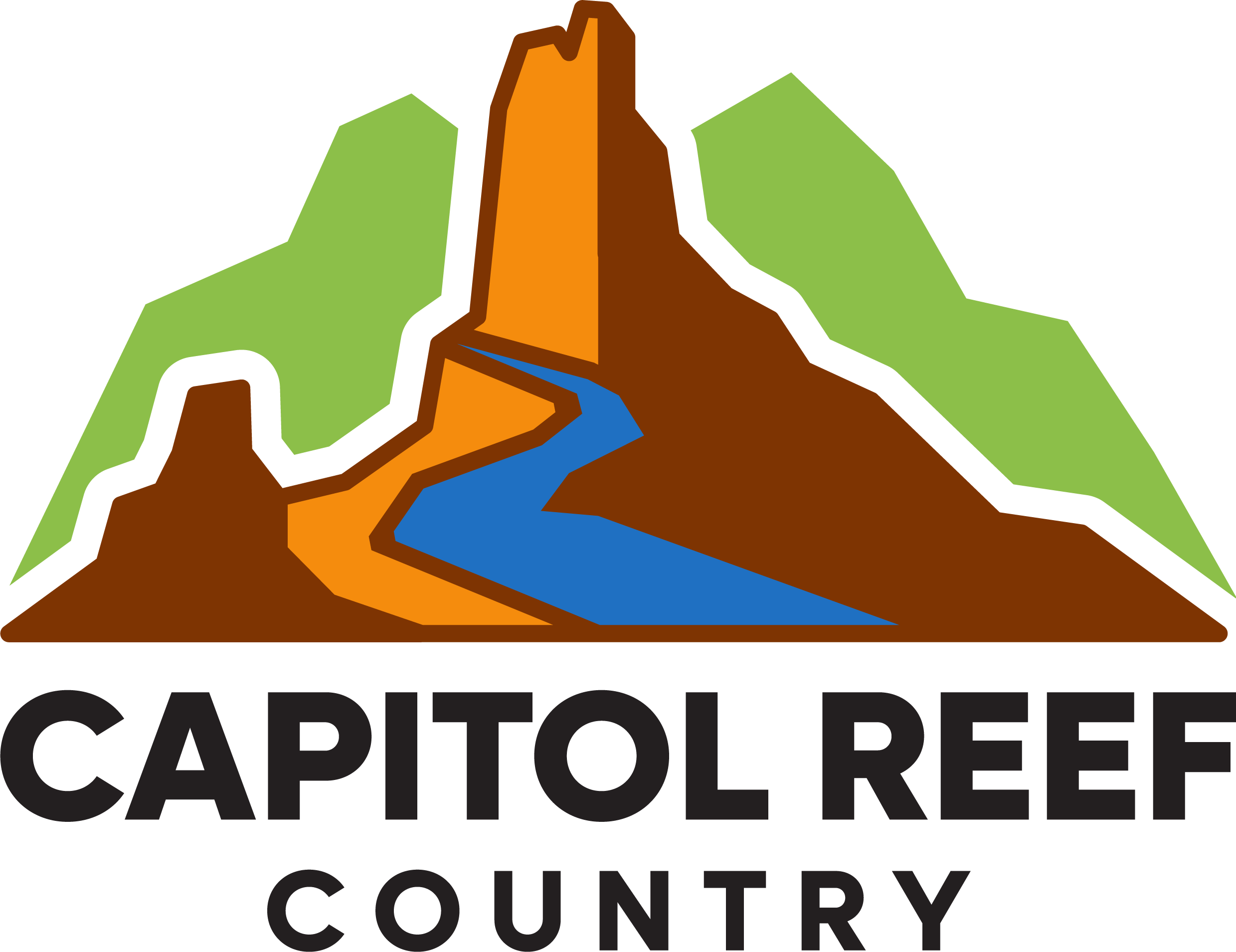Travelers who want to experience solitude and natural beauty in Capitol Reef Country should visit south-central Utah during the off-season fall months. The park becomes less crowded during September to November because summer visitors have departed so visitors can fully experience the park’s dramatic red rock formations and historical sites and cool autumn climate. The Waterpocket Fold stands as a 100-mile-long geologic monocline that produces dramatic cliffs and domes and deep canyons throughout this hidden Utah national park. The autumn season at Capitol Reef brings comfortable temperatures and colorful Fruita orchard foliage and peaceful exploration of its trails and roads. The autumn season at Capitol Reef National Park offers visitors a serene and revitalizing experience while they search for golden aspens and discover pioneer history.
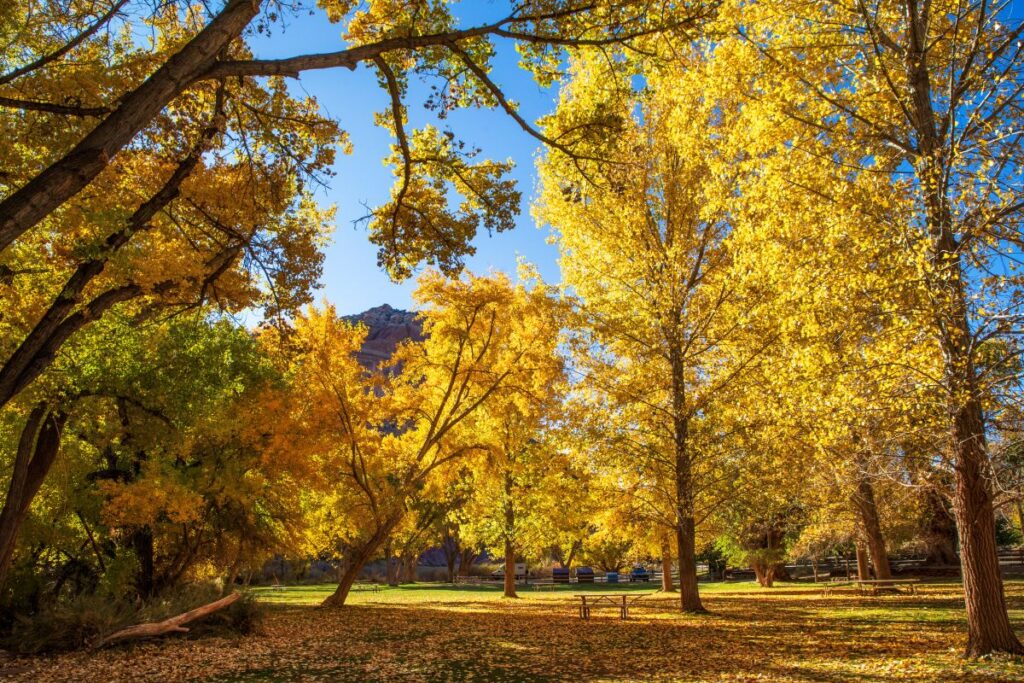
Seasonal Temperatures and Typical Weather Conditions
The autumn season in Capitol Reef Country provides relief from summer heat because September temperatures reach between 60°F to 80°F and November temperatures range from 50°F to 70°F. The nighttime temperatures reach between 30s and 50s. so people need to wear multiple layers. The dry climate of Capitol Reef offers excellent stargazing conditions because it maintains low humidity and clear skies throughout the year. The region experiences occasional thunderstorms during late summer monsoon season which extends into early autumn. The arrival of autumn colors in late September brings cooler temperatures but higher elevations and late-season periods may experience rain and light snowfall. The visitor center provides the most recent weather information because canyon flash floods pose a threat throughout the entire year.
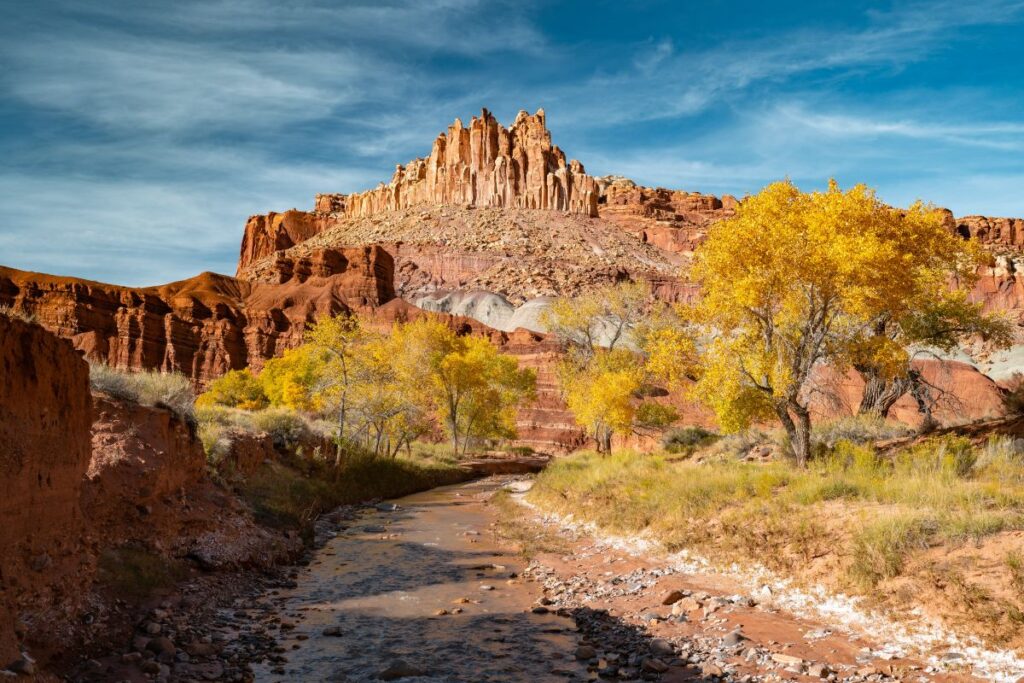
Scenic Places and Things to Do
Outdoor enthusiasts find endless adventure in Capitol Reef through its scenic drives which include the 8-mile paved Scenic Drive that shows off towering sandstone cliffs and the Waterpocket Fold. The remote monoliths and spires of Cathedral Valley can be reached by dirt roads that require high-clearance vehicles during the unpredictable fall weather. The Sulphur Creek hike provides shaded waterfalls and creek crossings during the cooler fall months while offering hiking trails for all skill levels. The historic Fruita orchards become a fruit-picking destination in autumn while visitors can prepare fresh pies at the Gifford House. People can choose to spend their time picnicking under autumn leaves or watching the sunset from Sunset Point for a peaceful experience.
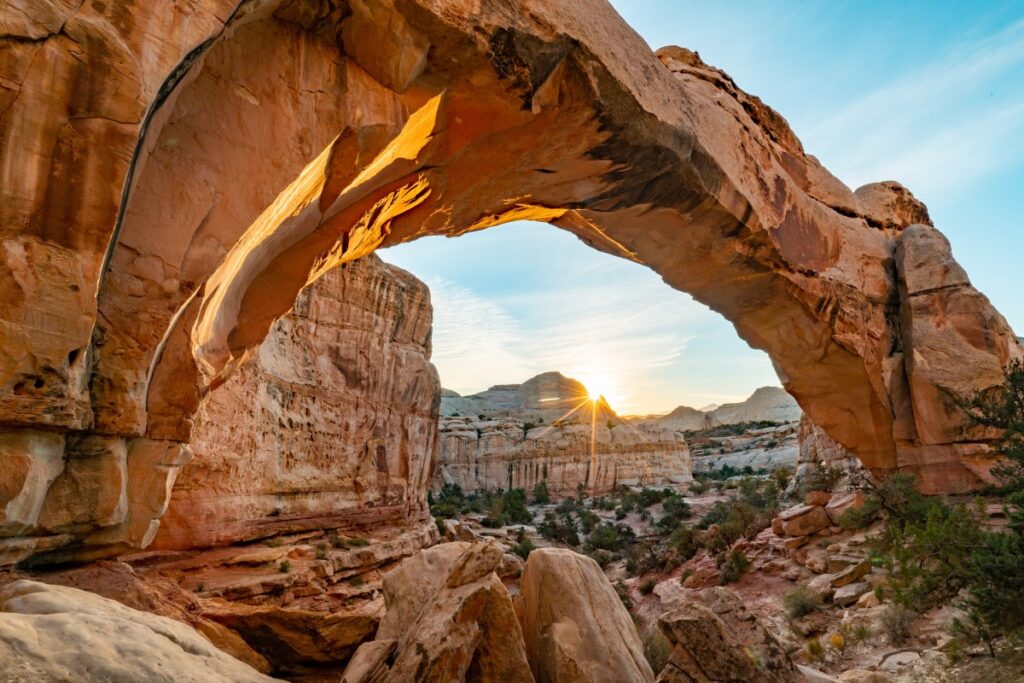
Top 7 Things to See and Do in Fall
Your off-season adventure requires these essential activities which combine natural beauty with exciting pursuits and cultural attractions.
- The Scenic Drive route leads you through the park’s core where you can witness breathtaking views of cliffs and canyons while enjoying a peaceful experience because of reduced traffic during autumn.
- The 1.8-mile Hickman Bridge trail provides access to a massive natural bridge while autumn foliage enhances the surrounding landscape.
- The historic Fruita Orchards offer u-pick opportunities to harvest apples and pears from their ancient trees during specific seasonal periods.
- The Fremont Petroglyphs can be viewed from a short boardwalk which provides visitors with a chance to see prehistoric rock art.
- The Capitol Gorge Trail provides visitors with a shaded and easy walking path through a narrow canyon where they can see pioneer inscriptions and natural water pockets known as “tanks.”
- The autumn season brings perfect conditions for stargazing because of its dark skies which allow visitors to see the Milky Way through October during ranger-led programs when available.
- The short hike to Sunset Point reveals breathtaking views from panoramic points that become even more enchanting when the rocks turn golden during autumn sunsets.
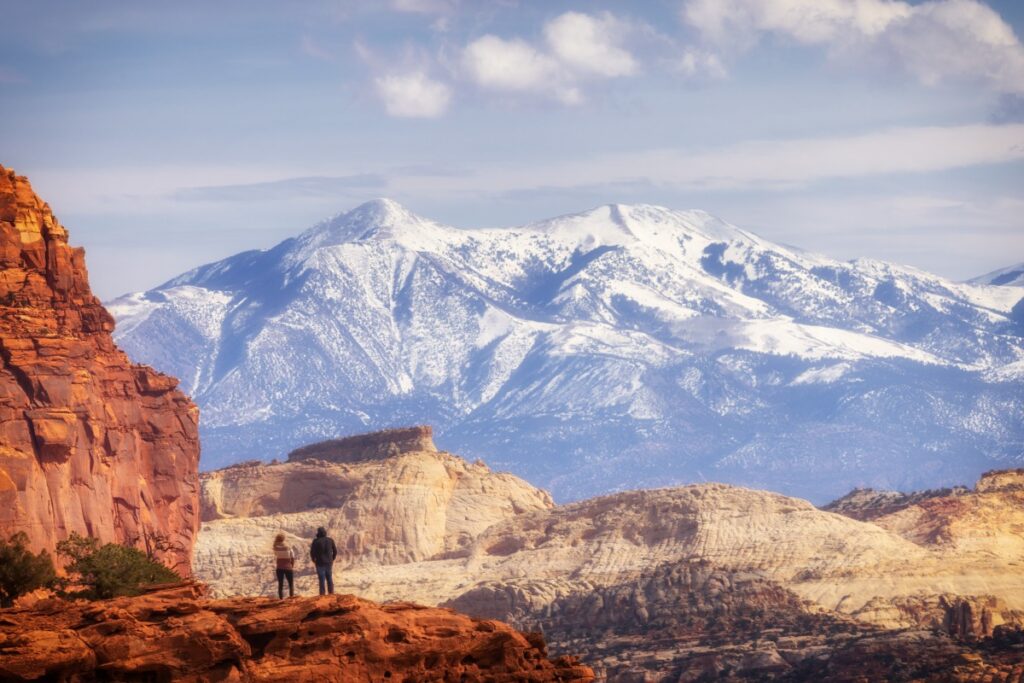
A Fun Fact About Capitol Reef Country
The white Navajo Sandstone domes at Capitol Reef National Park earned their name because they resemble capitol buildings while the Waterpocket Fold forms a “reef-like” barrier which early settlers encountered as an impassable ocean-like barrier. The park’s distinctive geological features earn it the nickname “hidden treasure” of Utah’s red rock region through its unusual naming convention.
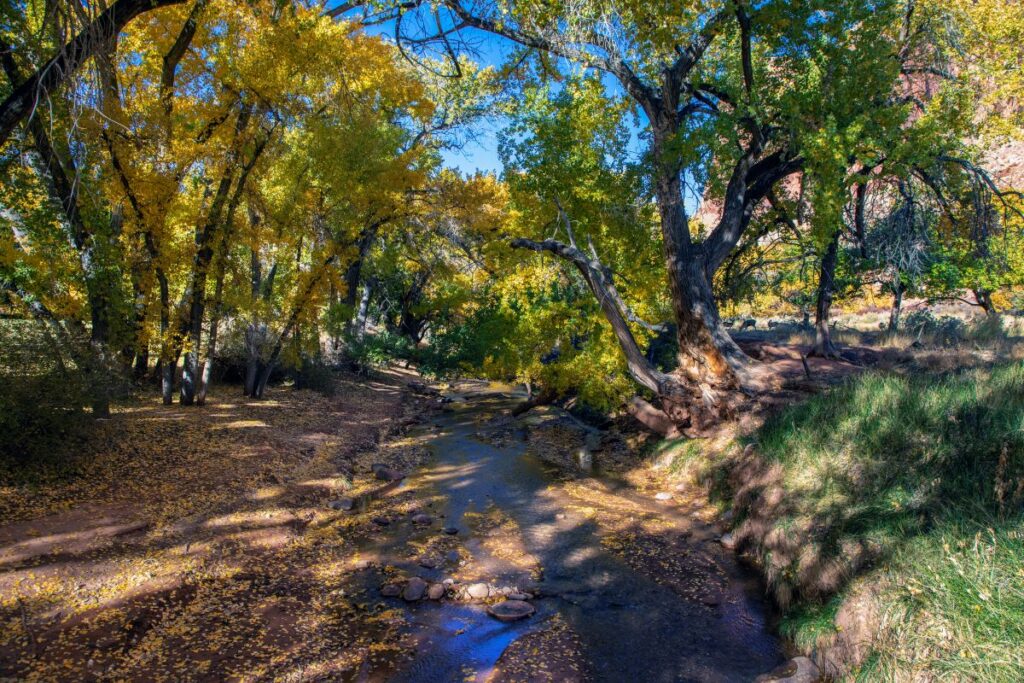
Historic Places Worth Exploring
Capitol Reef’s history spans millennia, with layers of human stories etched into its landscapes. The Fremont Culture Petroglyph Panel, accessible via a short trail, features 1,000-year-old rock art from the Fremont people, who inhabited the area from around 300 to 1300 CE—depicting anthropomorphic figures, animals, and abstract designs that offer insights into their daily life and beliefs. In the Fruita Historic District, explore the one-room Fruita Schoolhouse, built in 1896 by Mormon pioneers, where classes were held until 1941—imagine frontier education in this remote valley. Nearby, the Gifford Homestead, a preserved 1908 pioneer home, showcases early settler life, complete with a museum and seasonal pie sales—Mormon families like the Giffords planted over 3,000 fruit trees here in the late 1800s, turning the desert into an oasis. The Pioneer Register in Capitol Gorge features inscriptions from 19th-century travelers and settlers carving their names into the canyon walls, a testament to the challenges of crossing the rugged Waterpocket Fold. These sites blend natural beauty with cultural depth, perfect for history buffs.
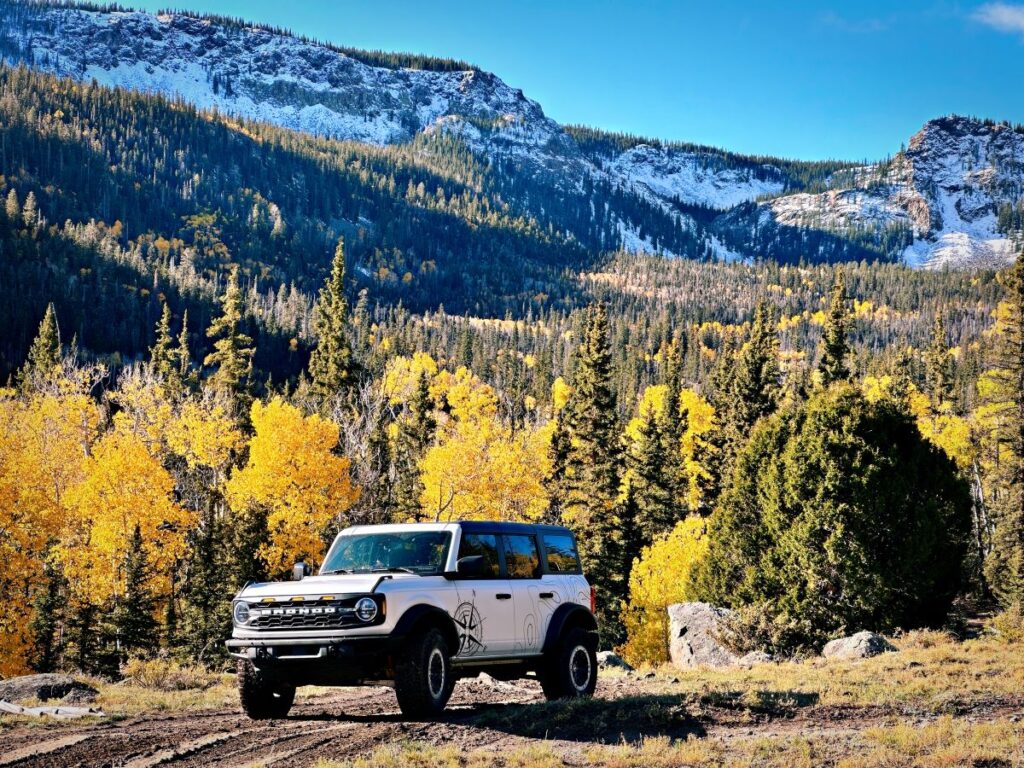
Family-Friendly Places to Visit and Things to Do
Capitol Reef is exceptionally welcoming for families, with activities that engage all ages without overwhelming challenges. Start at the Visitor Center for interactive exhibits, Junior Ranger programs (kids earn badges by completing activities like fossil hunts or nature journals), and ranger talks tailored for young explorers. The Fruita District is a highlight: families can pick ripe fruit from the orchards (free with park entry, bags provided), picnic under cottonwoods turning gold in fall, and savor homemade pies at the Gifford House—kids love the sweet treats and learning about pioneer farming. Easy hikes like the 0.6-mile Goosenecks Overlook offer dramatic canyon views with minimal effort, while the Grand Wash Trail provides a flat, 4.4-mile round-trip through a wide canyon where little ones can splash in seasonal streams and spot wildlife like marmots. For educational fun, view the petroglyphs and discuss ancient cultures, or borrow discovery kits from the visitor center for hands-on geology or fossil activities. The park’s dirt roads and backcountry are stroller-friendly in spots, and fall’s cooler weather makes outdoor play comfortable—just pack snacks, water, and sun protection.
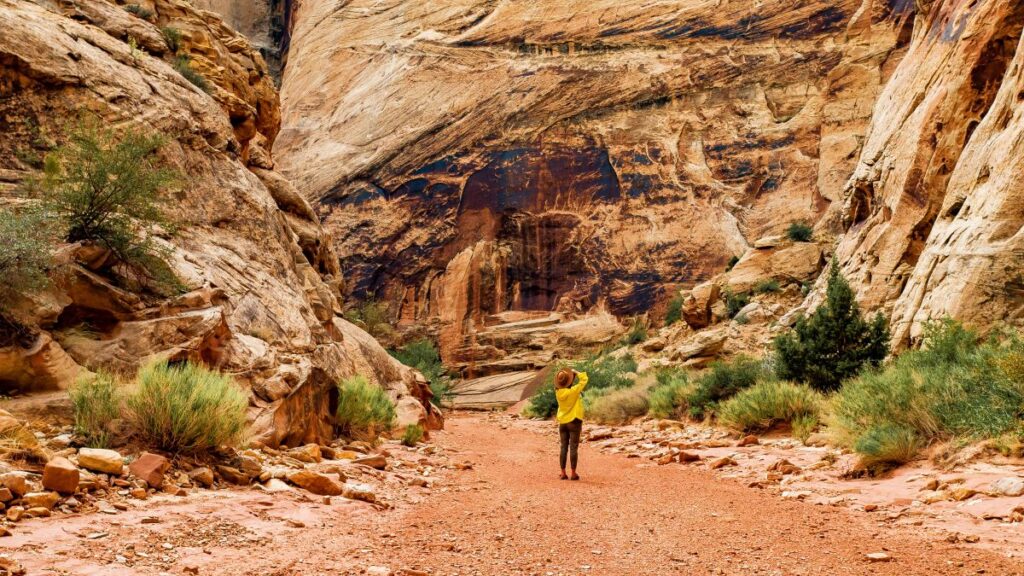
Off-season fall in Capitol Reef Country rewards those who venture beyond peak times with uncrowded trails, comfortable exploration, and a deeper connection to Utah’s wild heart. Plan your trip via the park’s official resources for the latest updates and embrace the quiet magic of autumn in this red rock paradise.
Keep Capitol Reef Country Forever Mighty
What is Forever Mighty? It’s practicing responsible travel while visiting Utah and Capitol Reef Country by following the principles of Tread Lightly and Leave No Trace.
Plan ahead and prepare, travel and camp on durable surfaces, dispose of waste properly, leave what you find, minimize campfire impacts, respect wildlife, be considerate of others, support local business and honor community, history and heritage. Help us keep Utah and Capitol Reef Country’s outdoor recreation areas beautiful, healthy, and accessible.
Plan ahead and prepare, travel and camp on durable surfaces, dispose of waste properly, leave what you find, minimize campfire impacts, respect wildlife, be considerate of others, support local business and honor community, history and heritage. Help us keep Utah and Capitol Reef Country’s outdoor recreation areas beautiful, healthy, and accessible.
